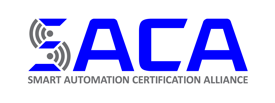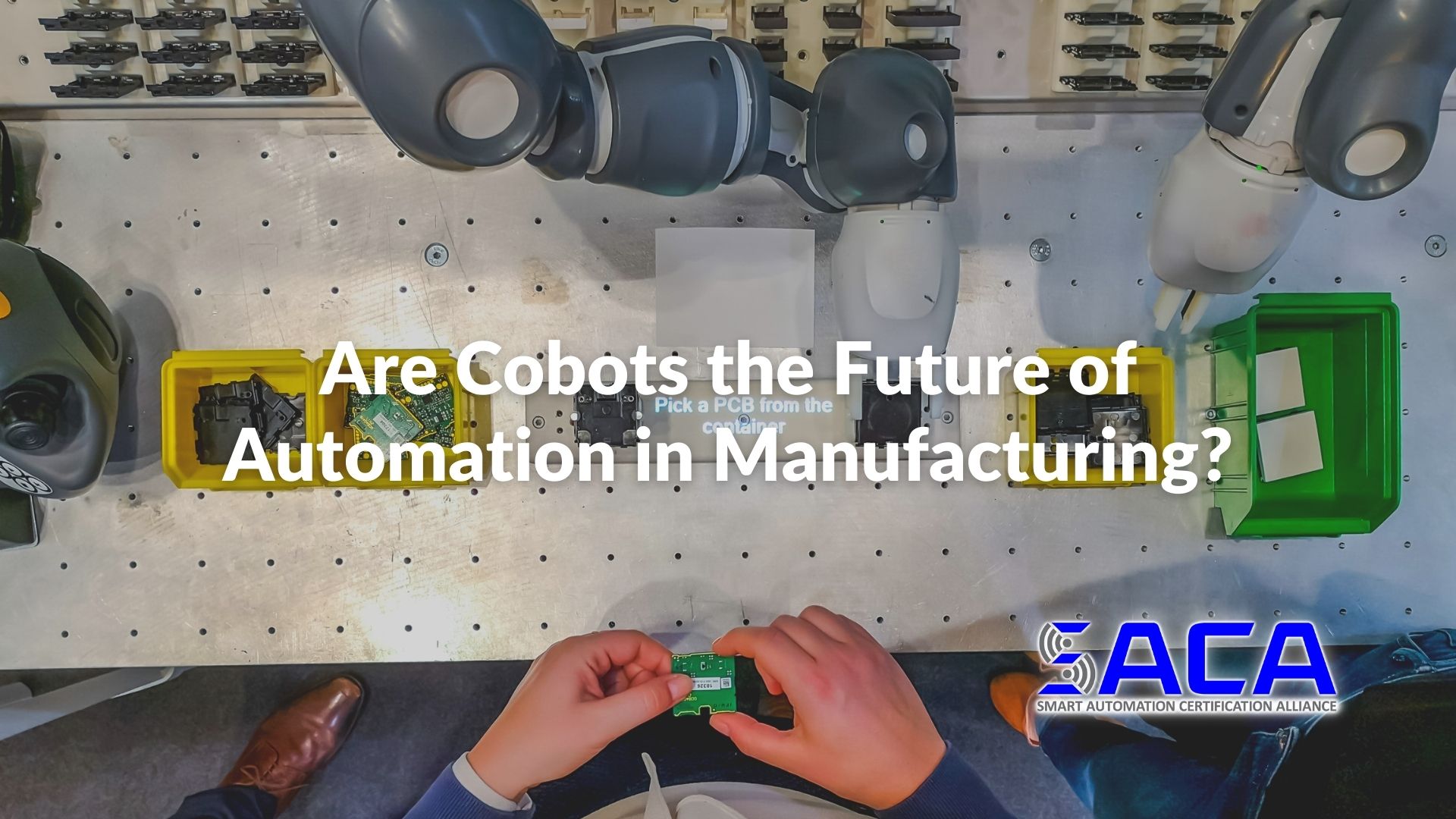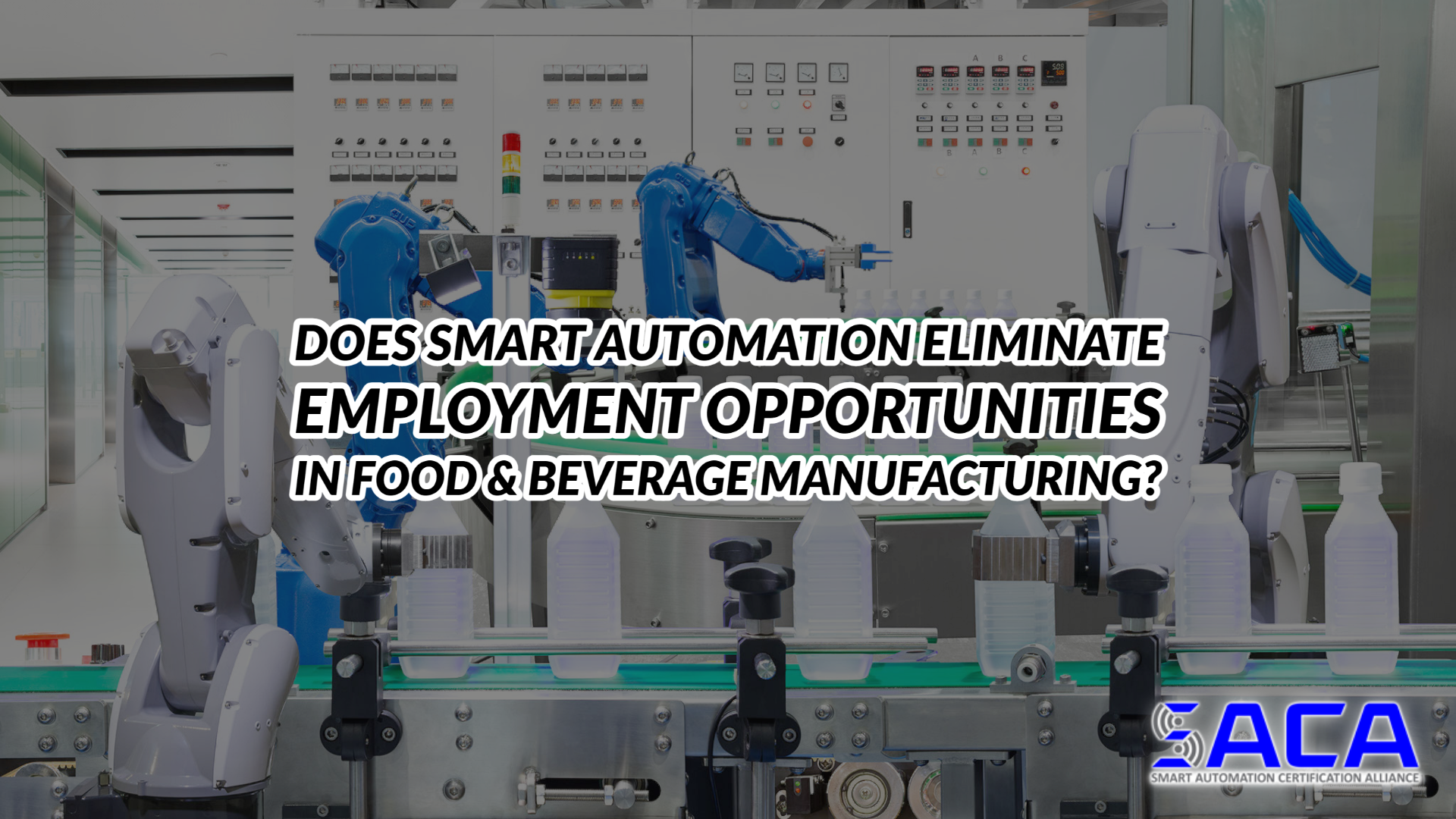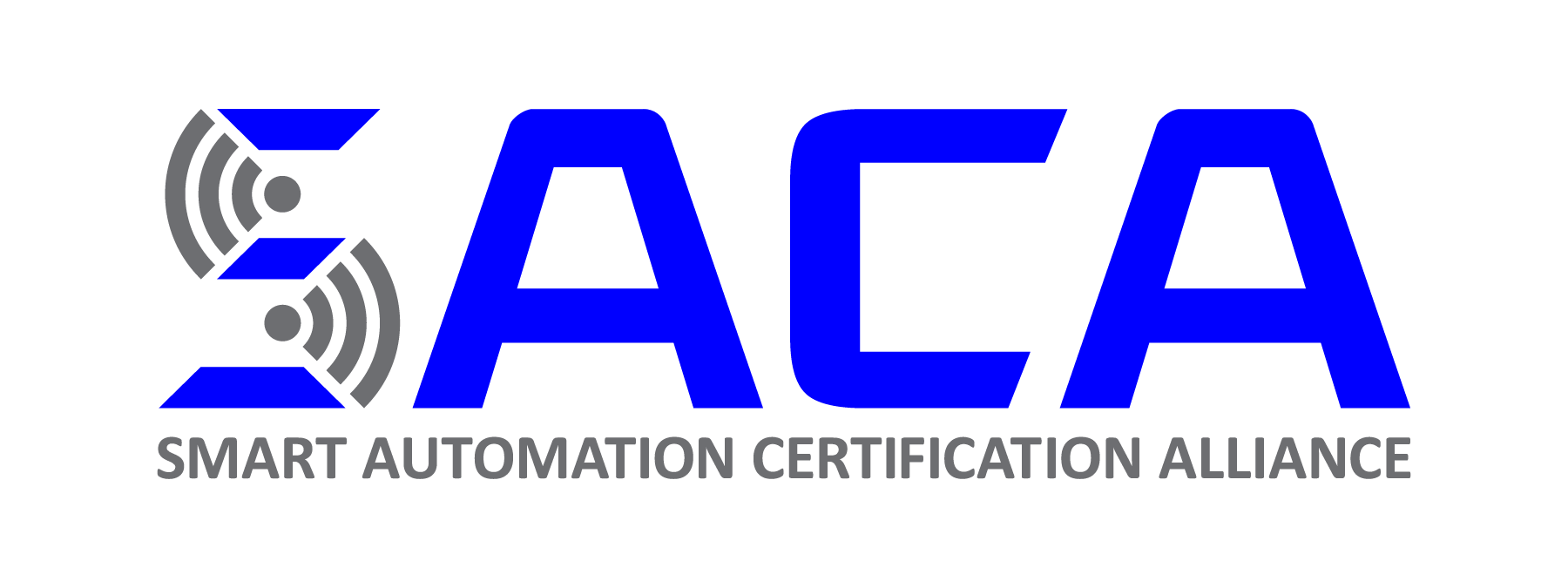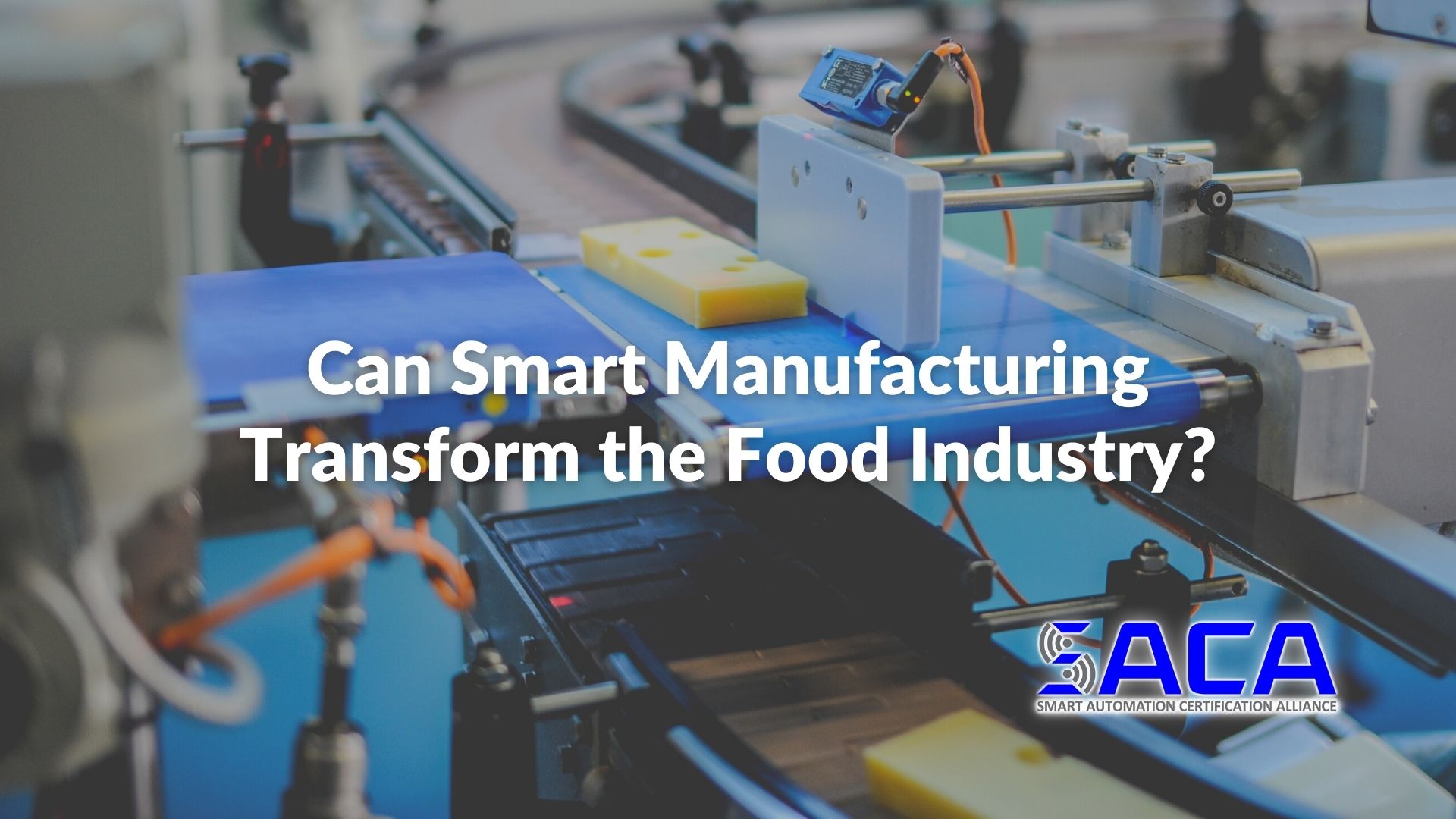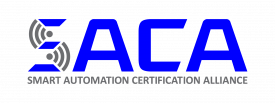Identifying specialists within the Industrial Internet of Things (IIoT).
Supply chain issues persist within the global manufacturing industry. Although nimble companies have found ways to navigate the issues brought about by COVID19, experts still anticipate concerns continuing through 2022, caused by the lingering effects of the pandemic and other global events.

One of the most pervasive issues stems from the reality that domestic manufacturing relies heavily on components made in other countries. While efforts are being made to mend this, in particular attempts to re-instate the component manufacturing industry in the US, it’s clear that this industry will reemerge in a different way with a focus on mechanization and automation.
The foundation of a long term strategy to mitigate these problems in the future will involve leveraging the Industrial Internet of Things (IIoT), which presents a groundbreaking opportunity for data capture at each step of a manufacturing process.
This extensive study by Inmarsat indicates that many manufacturing companies are either already using or anticipate using IIoT to enhance their productivity. A smart factory can track all elements of the production chain and communicate information and even anticipations within the network.
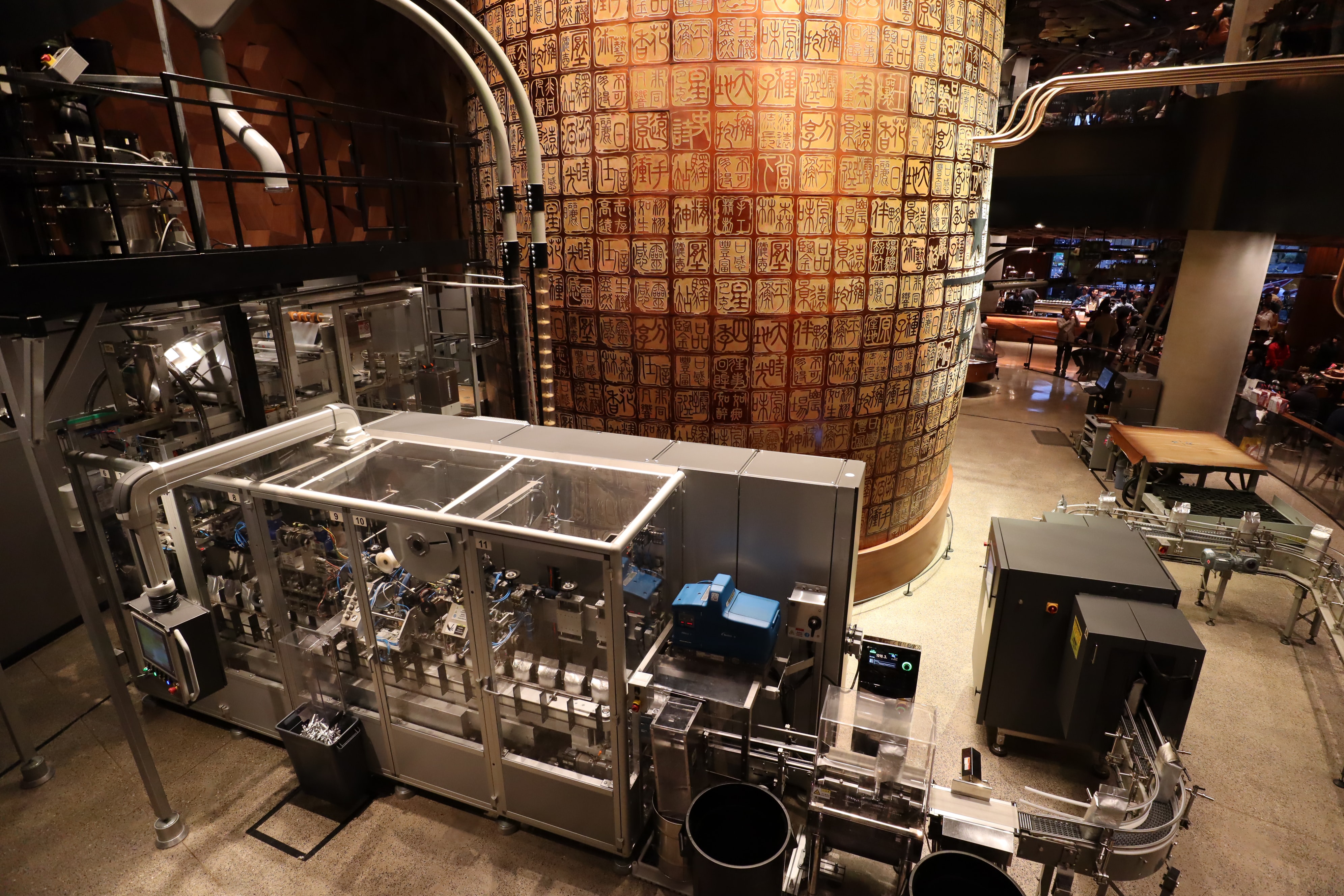
In addition to valuably capturing data, a smart-automation chain can perform pre-emptive actions based on the needs of the incoming workload; for example submitting a work-order for components required on the production line, utilizing a company’s secure industrial WLAN.
Unlike residential (or office) WiFi, an industrial system transfers small amounts of data, and as such requires a small amount of power but must remain uninterrupted. Knowledge of the specificities of these systems is essential to optimize an efficient order-to-customer pipeline.
Because of innovations like re-programmable robots and even rent-a-bot companies emerging, there is much less danger of expensive built-in obsolescence and more opportunity for network, automation and programming specialists within manufacturing companies.
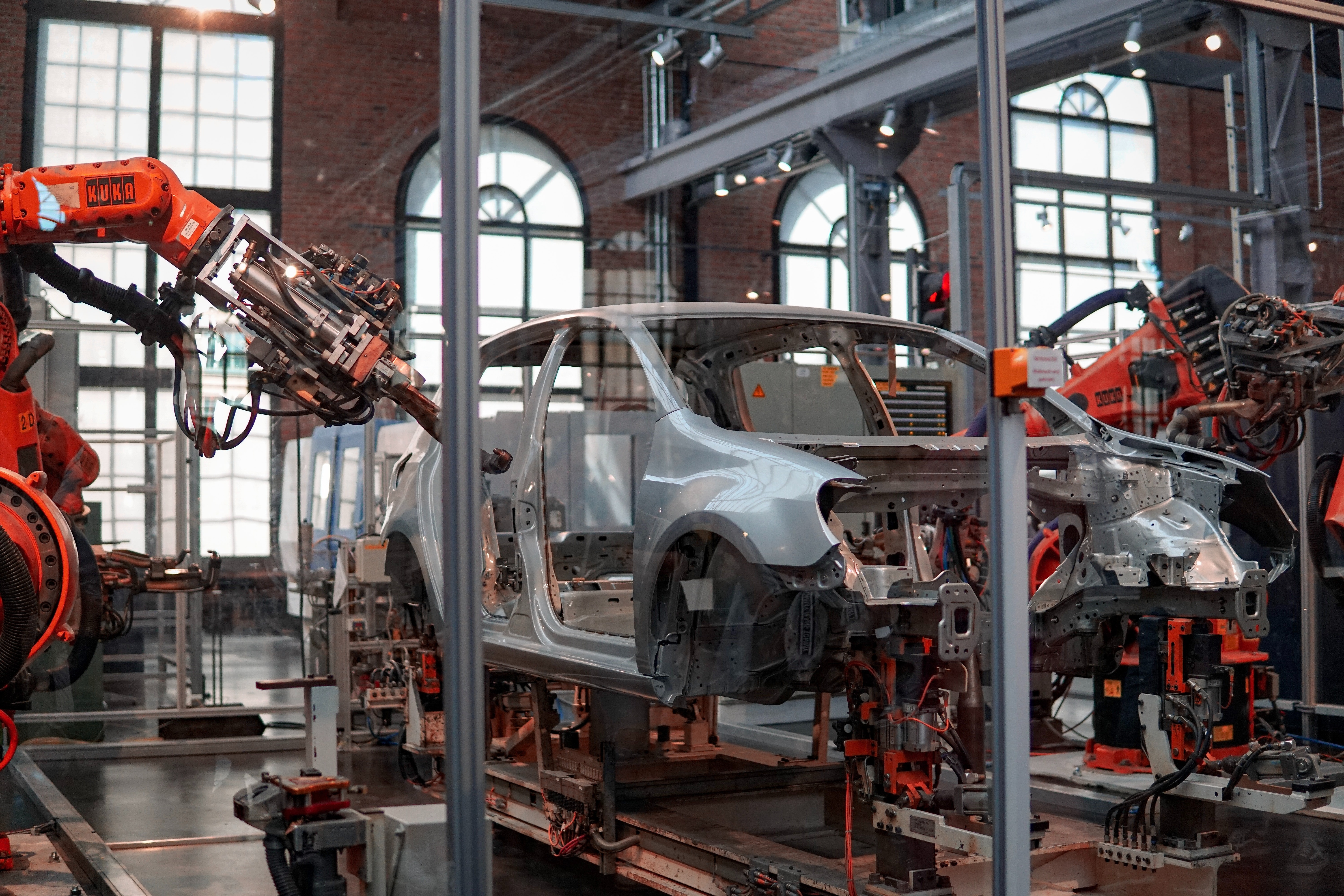
Companies searching for highly-skilled workers to ease their supply chain disruptions want to make sure that potential employees actually have the skills to excel without significant additional training. That’s why industry-standard certifications are important for supply chain workers. They provide employers with evidence that a worker has the knowledge and hands-on skills to work with today’s advanced technologies.
Industrytoday.com states that ‘new developments in automation are allowing small manufacturers to meet demand while helping with American competitiveness’. Today’s workers need more advanced technical and technological skills than ever before. Unfortunately, there aren’t enough workers with these skills to fill the many roles available today, creating what is known throughout industry as the “skills gap.” Modern businesses must ensure that their workers have up-to-date, relevant accredited skills. How can companies be sure that their employees are at the correct skill-level?
The Smart Automation Certification Alliance (SACA) focuses on connected-systems skills and leads the effort to certify students and workers who demonstrate the required knowledge and hands-on smart automation skills employers so desperately need. SACA professional development opportunities provide extensive training courses to equip teachers to promote Industry 4.0 certifications. These professional development opportunities are offered throughout the year at regional centers. Courses last 3-5 days each. Upon successful completion of each course, teachers will be certified in the process of examining students for a given credential and administrating a certification preparation course.
To learn more about Industry 4.0 certifications and how SACA can help both educational institutions and industry employers begin the task of bridging the Industry 4.0 skills gap, contact SACA for more information.
Header Photo by Denny Müller on Unsplash
- Published in News
Micro-Credentials Pave Micro-Pathways to Career Success
There are many new forms of advanced, “connected” technologies that characterize what’s commonly known as Industry 4.0. These technologies, as a group, also go by a variety of monikers, including Smart Factory and the Industrial Internet of Things (IIoT).
Today’s workers need more advanced technical and technological skills than ever before. Unfortunately, there aren’t enough workers with these skills to fill the many roles available today, creating what is known throughout industry as the “skills gap.”
That’s why the Smart Automation Certification Alliance (SACA) partnered with a wide variety of educational institutions and industry leaders to develop a set of Industry 4.0 certifications for a range of industries. These credentials were developed in conjunction with industry to ensure that they represent the job-ready skills that employers desperately need today.
SACA designed many of its certifications in a modular format, so that workers could earn stackable micro-credentials that will enable them to start a successful career before earning a full certification. A recent report by an educational nonprofit organization underscores the importance micro-credentials can play in creating micro-pathways to career success.
In this article, we will take a closer look at examples of educational institutions that are partnering with local industries to create micro-pathways based upon micro-credentials to put workers on a fast track to a new career.
What are Micro-Pathways?
The Education Design Lab (the “Lab”), “a national nonprofit that co-designs, prototypes, and tests education-to-workforce models” recently published a groundbreaking report on its latest efforts: Design Insights Brief: Community College Growth Engine Fund Micro-pathways: A Gateway to Community College Transformation (the “Brief”).
The Brief describes the launch of the “Community College Growth Engine Fund (CCGEF or the Fund, for short) – a design accelerator to work with community colleges and systems across the country to co-create a new class of credentials: micro-pathways. Co-designed with learners and employers, micro-pathways are defined as two or more stackable credentials, including a 21st century skill micro-credential, that are flexibly delivered to be achieved within less than a year and result in a job at or above the local median wage.”
The first CCGEF group of community colleges/systems included SACA members Ivy Tech Community College (Indiana) and Pima Community College (Arizona), as well as Seattle Colleges, the City University of New York, Prince George’s Community College, and Austin Community College.
Together with the Lab, these organizations developed 30 new micro-pathways over the past two years across a variety of industries. For example, relevant micro-pathway occupations targeted included the following: industrial engineering mechanic, electrician, HVAC technician, cloud associate, electro-mechanical manufacturing technician, cybersecurity professional, and entry-level data analyst.
Micro-Pathways Satisfy Both Learner and Employer Needs
During the development of these new micro-pathways, educational institutions and industry leaders gained valuable insights into how micro-credentials and targeted training satisfy both learner and employer needs. For example, they learned that students “need practical pathways with a clear return on investment (ROI).” Helping learners to understand the value they gain compared to their investment of time and money is essential.
Learners also “need flexible micro-pathways that meet them where they are in their journey.” In the wake of an ongoing global pandemic, it’s more important than ever to offer micro-credentials that offer “flexibility in format and timing as well as recognition of their life and work experiences.”
Importantly, they learned that students also “want and need deeper and more extensive work-based learning.” Starting and building relationships with employers via immersive experiences can put students on the fast track to career success. It also helps employers who “need learners to have work-based learning experiences,” such as internships, part-time jobs, school projects, or even volunteer projects.
Working closely with educational institutions also taught employers that “the micro-pathway co-design process [is] transformative to deepening their relationships with community colleges.” Not only does the process result in the creation of a pipeline of new skilled talent, but it also allows them “to provide input on an ongoing basis” as their needs evolve and change.
Finally, the process revealed that employers “strongly value training and credentialing for 21st century skills like communication, critical thinking and intercultural fluency.” Even as advanced technologies transform the workplace, these critical soft skills remain incredibly important to employers.
SACA Offers a Wide Variety of Micro-Credentials to Facilitate Micro-Pathways
How can your educational organization develop its own micro-pathways to student career success? The process begins by forging partnerships with local industries to determine the types of jobs they need to fill and what skills those roles require.
With a solid industry-education partnership forming the foundation of your effort to create new micro-pathways for your students, you can then choose the right micro-credentials to validate the skills employers are seeking. Fortunately, you don’t have to recreate the wheel.
SACA offers a wide variety of micro-credentials to facilitate micro-pathways to successful new careers for students. For example, here are just a few of the subject matter areas in which SACA offers micro-credentials: electrical, motor control, programmable controllers, mechanical, pneumatics, hydraulics, automation, Industry 4.0 technologies, robotics, electronic sensors, smart factory operations, process control, Ethernet communications, networking, data analytics, and predictive maintenance.
The Smart Automation Certification Alliance (SACA) sits at the forefront of the effort to certify students and workers who demonstrate the required knowledge and hands-on smart automation skills employers so desperately need. To learn more about Industry 4.0 certifications and how SACA can help both educational institutions and industry employers begin the task of bridging the Industry 4.0 skills gap, contact SACA for more information.
- Published in News
Are Cobots the Future of Automation in Manufacturing?
As 2022 begins, leaders of manufacturing companies across the country and around the globe are looking for solutions to a wide variety of challenges. Between the ongoing COVID-19 pandemic, supply chain disruptions, and a critical shortage of highly-skilled workers, manufacturers have their work cut out for them.
Increasingly, manufacturers are turning to advanced automation technologies to solve the problems they face. Adding these technologies can allow manufacturers to optimize processes to meet production deadlines more effectively and efficiently.
When many people hear the phrase “advanced automation technologies,” they often immediately think of robots. Industrial robots certainly do play an important role in many modern manufacturing facilities. However, some companies cannot afford large-scale implementation of expensive robots. Moreover, current workers worry that their jobs will be replaced by machines, leaving them unemployed and searching for new opportunities.
The rise of a new advanced automation technology — the collaborative robot or “cobot” — may offer manufacturers of all sizes new opportunities to automate processes while not only keeping their current employees, but also making their work lives better and more satisfying. In this article, we’ll take a closer look at cobots, their advantages over traditional industrial robots, and their potential applications in manufacturing facilities.
What are Cobots?
Traditional industrial robots tend to be large machines tasked with dangerous, repetitive jobs. Their size and movements present a potential source of danger to employees, so they’re usually cordoned off from employees for safety purposes.
Collaborative robots — also known as cobots — represent a new generation of machine designed to work safely alongside humans in the manufacturing environment. Rather than being cordoned off like traditional robots, cobots tend to be smaller so they can share space with human workers, a significant benefit in facilities with limited space.
Advanced safety features allow cobots to work effectively in close proximity to human workers. While cobots take over repetitive tasks, their human counterparts are freed up to focus on more complex tasks that involve troubleshooting or problem solving.
In fact, far from replacing human workers, cobots often rely on them to lead by example. In a Tech Briefs article, author Megan R. Nichols notes:
“Instead of relying on a programmer to tell them what to do, cobots are often taught by example. An operator physically controls the bot’s movements, running it through its necessary tasks. The cobot can then remember which tasks it needs to complete and perform them again and again with perfect recall and execution.”
How are Cobots Different from Traditional Industrial Robots?
Cobots are growing in popularity throughout the manufacturing sector. In an Interesting Engineering article, author Susan Fourtané reports that experts are forecasting annual global revenues of cobots to be between $7.6 billion and $9.2 billion within the next three to five years.
Why are cobots growing in popularity so rapidly? The answer lies in some of the unique benefits they provide that separate them from traditional industrial robots. According to Fourtané:
“Many believe human and machine collaboration plays a paramount role in the development of Industry 4.0 and the Industrial Internet of Things (IIoT)…The characteristics of collaborative industrial robots suit the demands of Industry 4.0 and the global megatrends better than those of traditional industrial robots. In other words, cobots are better equipped to join humans in Industry 4.0 — also called the Fourth Industrial Revolution — than traditional industrial robots.”
Here are a few of the key differences between cobots and traditional industrial robots:
Flexibility
Traditional industrial robots tend to be large, powerful machines that require a fixed installation dedicated to a single task. Cobots, on the other hand, are usually smaller, allowing for easy relocation and efficient task changes.
According to a Techman Robot Inc. blog post, “Some cobots are even made to be mobile, so you can easily transfer them to help out another station. They operate much more straightforward than their industrial counterparts, which need extensive changes done to their software and hardware to be repurposed.”
Versatility
Not only are cobots more compact and slower than traditional industrial robots, they’re also easier to use for a variety of tasks. For example, the Techman Robot Inc. blog post notes:
“Cobots are designed to take on different kinds of tasks. As long as you have the suitable end effectors, you can program packing bots to take on labeling or inspecting jobs in just a few minutes.”
Ease of Setup
Whereas a traditional industrial robot can take months to install and usually requires an expert to program, cobots often require little to no programming experience to set up. Even the most modest manufacturing facilities can implement cobots and train workers to use them in a matter of weeks.
Cobots feature the added benefit of empowering their human counterparts. Not only do cobots take over manual, repetitive tasks that would otherwise put humans at risk of injuries, such as carpal tunnel syndrome and back pain, but they also allow human workers to dedicate their time to more creative, fulfilling tasks, thereby improving job satisfaction and worker morale.
Cost
Given their smaller size and ease of use, it should come as no surprise that cobots are less expensive than traditional industrial robots. A lower price tag combined with their ease of setup, versatility, and flexibility makes cobots an attractive option for adding advanced automation capabilities to any size manufacturing facility.
As Nichols concludes in her article:
“Cobots may never fully replace traditional robots for large-scale manufacturing projects that require speed and power. The robots, however, will be the perfect tools to take over the repetitive entry-level tasks that are a part of many industries. If you design a robot that can handle these tasks, your skilled workers can spend their energy on other, more crucial tasks.”
What Applications do Cobots have in Manufacturing?
The unique benefits of cobots that set them apart from traditional industrial robots make them an attractive option for many different types of manufacturing facilities. But are they good for all applications? In this section, we’ll take a closer look at the manufacturing applications particularly suited to cobots.
In a Forbes article, author Naveen Joshi notes that cobots are “[o]ne of the most extensively used types of automation machines” and that, “[a]s the underlying technologies mature, collaborative robots in manufacturing can be made more versatile to take up more creative tasks.” The article highlights five key applications of cobots in manufacturing:
Picking, Packing, & Palletizing
Cobots equipped with cameras can accurately and efficiently pick, pack, and palletize a wide variety of products. Adding grippers or suction cups allows cobots to create cartons, pack items, and seal boxes, making fulfillment much easier.
Welding
The Techman Robot Inc. blog post notes that “[c]obots are so accurate that companies are using them to handle process tasks like soldering, screwing, and welding. They can perform these tasks day in and day out (and even after hours) without any slow-downs. They make little to no mistakes, too, so you can rest easy knowing your products have consistently good quality.”
Assembly
According to an Association for Advancing Automation article, cobots “are effective at automating [tedious and physically-demanding] tasks, like holding heavy parts, to allow human workers to be more productive with less risk of injury.” They’re also “more flexible than industrial robots. They can be integrated and programmed far quicker and with greater ease. This makes them more profitable in environments where the robot has to conduct various different tasks.”
Material Handling
Cobots come in mobile versions that can carry materials via a specific route. Not only can they handle hazardous materials safely, but they also streamline processes by eliminating the need for human workers to carry heavy boxes or use heavy equipment, such as forklifts.
Inspection/Quality
According to the Techman Robot Inc. blog post, “[c]obots can be equipped with cameras or sensors that inspect parts of a product for any defects. They can also be used to measure specific components to ensure that they’re being sorted into the right stream in the assembly line.”
Contact SACA to Learn More about Smart Automation Certifications
Cobots are just one of the many forms of new advanced, “connected” technologies that characterize what’s commonly known as Industry 4.0. These technologies, as a group, also go by a variety of monikers, including Smart Factory and the Industrial Internet of Things (IIoT).
Today’s workers need more advanced technical and technological skills than ever before. Unfortunately, there aren’t enough workers with these skills to fill the many roles available today, creating what is known throughout industry as the “skills gap.”
How can modern businesses find the workers they need? How will educational institutions teach the skills modern industry needs? These are questions that demand answers, and one promising solution is the development of industry-standard certifications that focus on connected-systems skills. The Smart Automation Certification Alliance (SACA) sits at the forefront of the effort to certify students and workers who demonstrate the required knowledge and hands-on smart automation skills employers so desperately need. To learn more about Industry 4.0 certifications and how SACA can help both educational institutions and industry employers begin the task of bridging the Industry 4.0 skills gap, contact SACA for more information.
- Published in News
Wearables Leverage Smart Technologies to Improve Safety and Productivity
Long, long ago, in a land that time has forgotten, there used to live human beings who were not connected to the Internet 24/7. They did not carry a telephone, camera, calculator, newspaper, encyclopedia, radio, calendar, clock, map, photo album, and book simultaneously on their persons.
What a dumb world they lived in! Does that sound harsh? Maybe, but what else would you call the opposite of the “smart” world we live in today? The example above seems silly, but 30 years ago the thought of having access to all those things — and more! — in the palm of your hand would’ve seemed just as crazy.
Today, smart technology is everywhere you look. It’s in our smartphones and other electronic gadgets. It’s in our homes and schools. We’re even wearing smart technology these days. From smart watches to fitness trackers, “wearables” are more popular than ever.
While many of the first uses of smart technologies in wearables focused on improving personal physical fitness, clever developers have created new devices for the workplace. If your workplace doesn’t already use some form of wearables for employees, it likely could in the near future.
In this article, we’ll take a closer look at the important role wearables are playing in today’s advanced manufacturing and logistics workplaces. Read on to learn how smart technologies are making employees safer and workplaces more productive and efficient.
What are Wearables?
According to Investopedia:
“Wearable technology, also known as ‘wearables,’ is a category of electronic devices that can be worn as accessories, embedded in clothing, implanted in the user’s body, or even tattooed on the skin. The devices are hands-free gadgets with practical uses, powered by microprocessors and enhanced with the ability to send and receive data via the Internet.”
When you hear the word “wearables,” smart watches and fitness trackers you wear around your wrist are probably the first devices that come to mind. However, as the definition above reveals, developers are becoming more and more creative when it comes to wearable technology.
Having access to your smartphone features on your watch and keeping track of the number of steps you’ve taken both have obvious benefits. But what about in the workplace? Is there really a need for these types of devices on the job?

After all, aren’t robots taking over anyway? Will there even be factory jobs for people in the future? Won’t it just be all automation? While automation certainly plays an increasingly important role in modern industrial facilities, the robot takeover has been greatly exaggerated.
Sure, some low-skill positions have been eliminated by the use of robots and other automated technologies, but there are still hundreds of thousands of open manufacturing jobs that employers are having a hard time filling. Moreover, the more automation there is, the more highly-skilled workers are needed to operate, maintain, troubleshoot, and repair that equipment.
As Jessica Lin notes in a Forbes article, “we have 30 to 50 years until we reach a world of full automation. It’s very hard to replicate the flexibility, speed and dexterity of a person. That’s why Amazon has a lot of robots, but still hired more than 425,000 people this year.”
People remain key assets today more than ever. Because of their importance, employers are now leveraging smart technologies in the form of wearables designed to protect and improve the everyday work experience for employees.
How Can Wearables Improve Safety in the Workplace?
Workplace safety: it’s an issue so fundamental that we tend to overlook its importance when we focus on seemingly bigger issues, such as improving efficiency and productivity via advanced automation technologies. However, employers would be wise to engage their employees in keeping safety first and foremost in their minds.
After all, workplace injuries greatly affect the bottom line. In her article, Lin highlights the impact felt by businesses as a result of work-related injuries:
“Every year in the U.S., nearly three million workers are injured on the job. The most frequent injury across this workforce are musculoskeletal injuries, which are often caused from cumulative wear and tear of the body, along with improper body mechanics. Musculoskeletal injuries are on average the longest injury to recover from, and usually the most debilitating in the long term. These injuries have huge financial implications – $170 billion was lost on workers’ compensation in 2018, and in an industry with high turnover, this means companies are spending unnecessary time and money to replace and retain employees.”

As Pat Stoik advises in an Industry Today article, “Employees are the best and first line of defense against safety incidents, which always disrupt business in some way…A well-executed safety culture not only ensures employees’ well-being, but also prevents disruptions and delays, saving companies money.”
How can companies accomplish this? One answer for food and beverage giant PepsiCo is the use of wearables. As Max Garland points out in a Food Dive article, “Frito-Lay’s need to fill 5,000 positions across its U.S. manufacturing sites to meet heightened demand has underscored the importance of keeping frontline employees healthy and able to work. Using wearables is one way to do that.”
According to Garland, “Thousands of workers at 34 Frito-Lay manufacturing and distribution centers cut back on improper lifting and posture when using Kinetic’s Reflex wearable device… [that] recognizes improper moving and lifting techniques and alerts the user with a vibration.”
In her article, Lin notes that Kinetic is “a New York-based company building wearable technology to reduce workplace injuries for industrial workers: everyone from last mile delivery drivers (who make up 40% of Kinetic wearers) to shipping, construction, manufacturing, and logistics operators.”
To date, companies using Kinetic’s wearables have experienced great success. As Garland notes, “[d]ata from the devices allowed management at Frito-Lay’s Kern Plant in California to determine what areas of the facility frequently featured improper movements…[and] to retrofit equipment and modify workspaces to reduce worker risk…reducing strain and sprain injuries by 19% YoY.”
Lin adds, “Since launching in 2014, Kinetic can now be found on tens of thousands of workers across the country, and customers include Pepsi, Iron Mountain, among others. On average, Kinetic reduces injury rates by 54%, lowers lost work days by 88%, and enables managers the insights necessary to create a safer working environment.”
Kinetic is not the only company producing wearable devices for the workplace. Many other companies have developed wearables that can improve worker safety in a variety of ways. For example, in a JourneyApps Blog article, author Leon van Heerden notes, “Wearables can now tell you which surfaces are too hot to touch, when machinery is malfunctioning, or even when conditional hazards, like spilled fluids, are present.”
Moreover, he points out that wearables can also “warn workers, and their management, when someone is physically overworking themselves and that they need to take a break before they become fatigued and make a mistake that can lead to an injury.” Importantly, improved safety isn’t the only significant impact wearables are making in the industrial workplace.
How Can Wearables Increase Productivity in Industry?
Reducing injuries and time away from the job positively impacts the bottom line, but businesses that have adopted wearables in the workplace have also learned how to use them to increase efficiency and drive greater productivity.
For example, van Heerden writes, “There are many use cases where businesses can improve efficiency: technicians can be connected to vital information about the equipment they are servicing; field workers can be given access to information on inspections; employees can be tracked in challenging environments.”
He adds, “Workers in the field, factory, or warehouse can now access information through wearables, often replacing a touch interface with one that is voice-driven, allowing their hands to remain free for the job at hand.”
Another area in which wearables can make a huge impact is employee training. General Motors uses Google’s Glass to train new hires — hands-free and on-the-go — on an active production line. Alternatively, wearables can also be used for both “immersive task simulations” and “three-dimensional training on how various products work through the help of HMTs and assisted reality,” according to van Heerden.
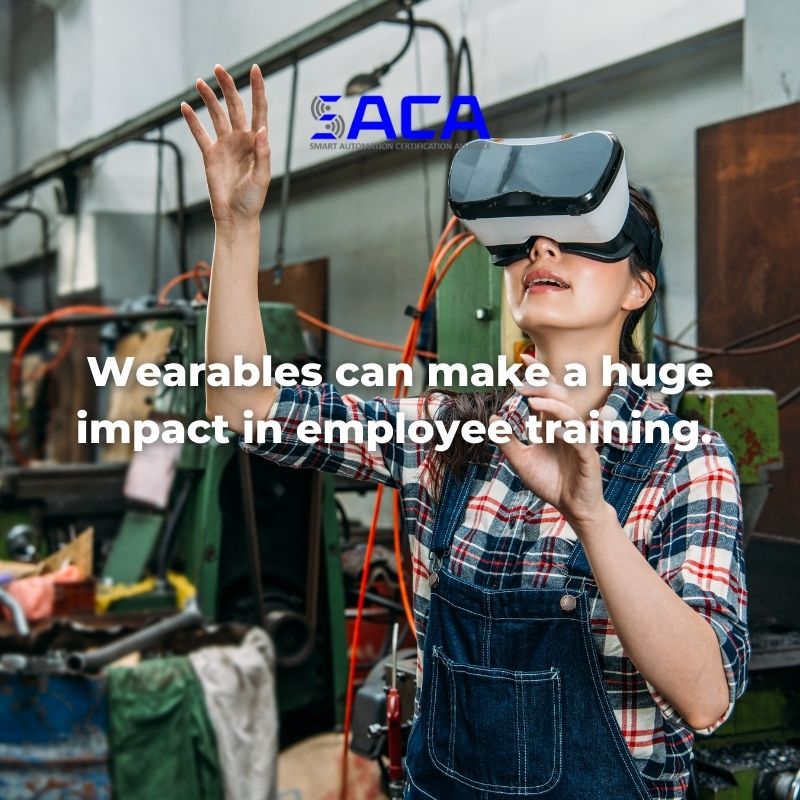
Will the trend of wearables in the industrial workplace continue? Authors like van Heerden believe it will: “Wearable technology will continue to grow within the industrial sector as it has clearly demonstrated its benefits. Productivity is increased, safety is improved, errors are reduced and training is more meaningful when wearable technology is incorporated.”
Recent research supports his view. Gartner predicts “total wearable sales of $81.5 billion in 2021, while a report by Research and Markets predicts the industrial wearable devices market will exceed $2.78 billion by 2024, increasing annually at a rate of 9.2%.” The same appears to hold true for the logistics industry: “a 2018 study logistics association MHI predicted that within five years, 70 percent of warehousing and distribution facilities would adopt wearables.”
Industry would not be seeing these benefits without the cooperation of willing employees. In his article, Garland notes that employees have readily embraced the use of wearables in the workplace, because “it empowers them to talk with management about how a facility could be improved.” As their behavior in the workplace changes in response to data gathered from wearables, employees can initiate conversations that lead to meaningful changes that improve their jobs.
Contact SACA to Learn More about Smart Automation Certifications
Wearables are just one of the many forms of new advanced, “connected” technologies that characterize what’s commonly known as Industry 4.0. These technologies, as a group, also go by a variety of monikers, including Smart Factory and the Industrial Internet of Things (IIoT).
Today’s workers need more advanced technical and technological skills than ever before. Unfortunately, there aren’t enough workers with these skills to fill the many roles available today, creating what is known throughout industry as the “skills gap.”
How can modern businesses find the workers they need? How will educational institutions teach the skills modern industry needs? These are questions that demand answers, and one promising solution is the development of industry-standard certifications that focus on connected-systems skills. The Smart Automation Certification Alliance (SACA) sits at the forefront of the effort to certify students and workers who demonstrate the required knowledge and hands-on smart automation skills employers so desperately need. To learn more about Industry 4.0 certifications and how SACA can help both educational institutions and industry employers begin the task of bridging the Industry 4.0 skills gap, contact SACA for more information.

- Published in News
Does Smart Automation Eliminate Employment Opportunities In Food & Beverage Manufacturing?
Spoiler alert – no! Contrary to the narrative that evil job-killing robots are coming to limit employment in the manufacturing industry, automation and smart innovations are facilitating: growth, efficiency improvements and well-paying jobs. While it’s true that some plants are struggling to employ enough new workers, the solution to the skills-gap is training. Food and beverage manufacturing environments can be challenging for humans – sometimes featuring extreme temperatures! Interviewed by Food Engineering Mag (.com), David Ziskind, director of engineering at Black and Veatch stated “Focusing on automation in areas where humans are less comfortable is a good place to start”. While automation is leading companies forward, the industry still relies on people. Recent events have put a strain on workers, talking about the fluctuations in customer demands at the beginning of 2020, Fooddive.com tells us, “[…] workers had to simultaneously deal with supply shortages, rapid onboarding of new suppliers, wild demand swings, and fundamental changes in packaging to cater to the shift from foodservice to retail. This happened as stringent new workplace safety rules and remote working caused production labor costs in the U.S. to surge by up to 20%.”
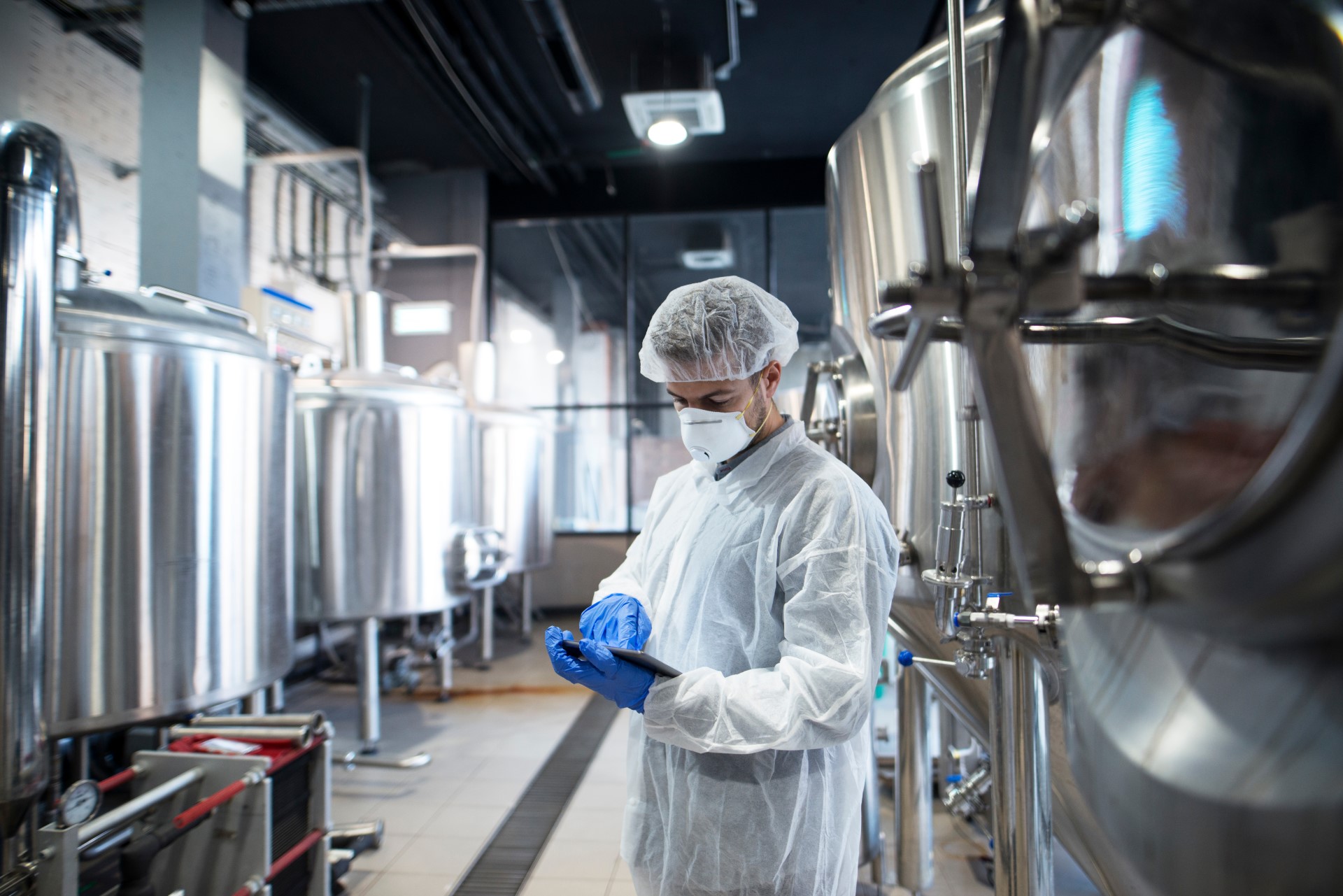
Have You Tried Turning It Off And On Again?
The rapid embracing of industry 4.0 technology in the wake of the COVID-19 is part of, what the World Economic Forum recently coined ‘Great Reset’. This term is often misconstrued by conspiratorial minds, but in reality describes the 4th industrial revolution – ‘a decisive set of actions oriented toward delivering value not only to companies themselves but also to society as a whole’. Technological advancements that have been waiting in the background for more companies to embrace them are now being proliferated throughout industries. People returning to the workforce may find themselves in a complexly modernized environment. This article from Mckinsey.com is optimistic about the reset, ‘by transforming the nature of work through intentional upskilling and/or reskilling efforts, […the great reset is…] empowering workers to realize their potential through new ways of working.’
A Brave New World in Manufacturing
Tyson foods are seeing a major discrepancy between demand for their product and their ability to staff their processing lines adequately, according to a Fooddive.com article Tyson are finding it ‘challenging […] to see the kind of applicant flow necessary to fill the gaps’. The COVID-19 pandemic has led some potential employees to ponder their cost benefit analysis when going to work in areas such as manufacturing, but those personnel could find new opportunities within their existing workplace to acquire more skills, and level-up their employment. New positions have opened up in manufacturing such as:
- Technician
- Support Engineer
- Applications/Software Engineer
- Software Developer
- Service Specialist
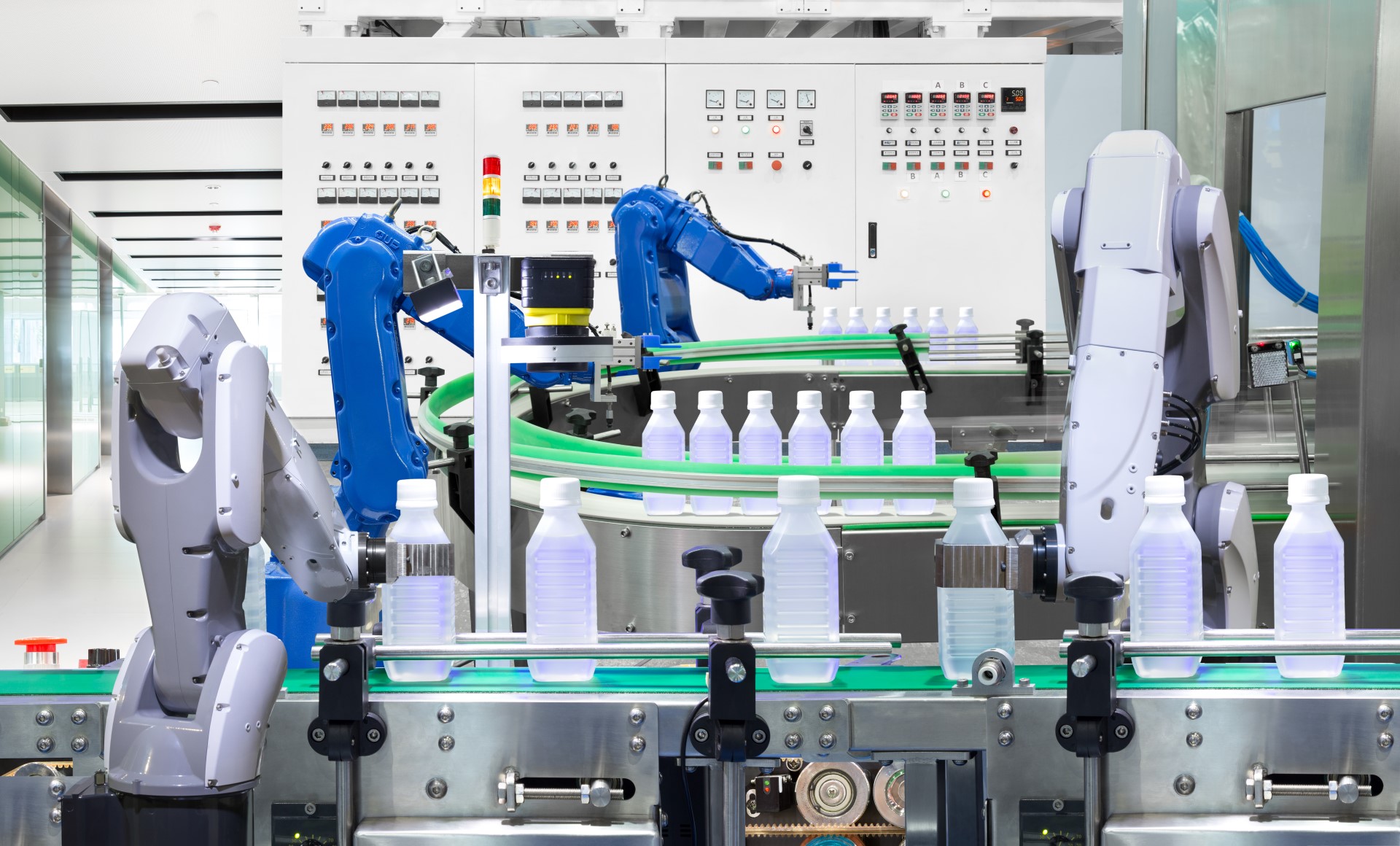
All these positions require specialist training and candidates with certification in these areas will be sought out by firms that have embraced industry 4.0. According to this recent Mckinsey study, ‘In Europe and the United States, […] demand for physical and manual skills in repeatable and predictable tasks is expected to decline by nearly 30 percent over the next decade, while demand for basic literacy and numeracy skills would fall by almost 20 percent. In contrast, the demand for technological skills (both coding and especially interacting with technology) is expected to rise by more than 50 percent, and the need for complex cognitive skills is set to increase by one-third.’ Writing for Industry Week.com, the author of Saving American Manufacturing, Michael Collins states, ‘the only viable alternative […for modern manufacturing staffing…] is to focus on investing in advanced training needed for these highly skilled jobs’. And once those skills are in place credentials will be required to properly fill positions within companies.
How SACA can help
Many certifications are available today that address isolated competencies, from machining to maintenance and IT, but SACA certifications are different. They certify “connected systems” skills that address the integration of these technologies with Industry 4.0 technology.
With the help our partners, SACA has created certifications that are industry-driven, developed for industry by industry. They are developed through a rigorous process that begins with the creation of truly international skill standards, endorsed by leading experts in Industry 4.0 technologies throughout the world.
SACA’s Smart Automation certifications use a modular structure to enable them to fit a wide range of individual needs, industries, and educational environments, and are available in three categories – Associate, Specialist, and Professional. Each certification is stackable, allowing individuals to start with one certification and add other certifications to customize their documented skills.
All SACA certifications are occupationally focused, so they prepare individuals for specific careers in the world of Industry 4.0. If you would like more information into SACA’s world-class Smart Certifications, please contact us!
Students that display a flair for lateral thinking will relish roles that involve responding to the automated diagnosis of problems with system components diagnosing problems or inefficiencies in a digital supply network. Maintenance of the processes and components used in an industry 4.0 optimized facilities requires keen critical thinking skills and a deft hand for troubleshooting issues. In addition these skills are valuable to system designers looking to ensure the safest and most efficient product delivery.
Thanks to the help of our partners, SACA has created certifications that are industry-driven, developed for industry by industry. They are developed through a rigorous process that begins with the creation of truly international skill standards, endorsed by leading experts in Industry 4.0 technologies throughout the world.
SACA’s Smart Automation certifications use a modular structure to enable them to fit a wide range of individual needs, industries, and educational environments, and are available in three categories – Associate, Specialist, and Professional. Each certification is stackable, allowing individuals to start with one certification and add other certifications to customize their documented skills.
All SACA certifications are occupationally focused, so they prepare individuals for specific careers in the world of Industry 4.0. If you would like more information into SACA’s world-class Smart Certifications, please contact us!
- Published in News
Transposing your student’s skills into the Smart Factory environment
The industrial sector is currently moving through a paradigmatic shift, as manufacturing companies embrace more automation in the development of smart factories. Industry 4.0 is our present, and future as the most nimble companies poise to become intelligently networked leaders of their field. According to Forbes manufacturers plan to build 40% more smart factories over the next five years, which a Deloite study claims has the potential to create a huge amount of high-skilled occupations. In spite of concerns over potential human redundancies, the progression into the future is creating the need for highly skilled (and well paid) employees. As the industry embraces automation it encourages more opportunity for the development of new expertise, and for existing technical skills to flourish!
Identifying How Your students’ Skills Can Be Integrated Into Industry 4.0
Educators can thoughtfully guide their students into roles that value education and skills when the core principles of how the manufacturing industry has progressed, in response to industry 4.0, are understood. Strategically, mentors hugely benefit from open communication channels, and partnerships with transitioning facilities to identify prevalent needs and design programs that prepare students for success. Additionally, educators should identify which certifications are most recognized by employers.
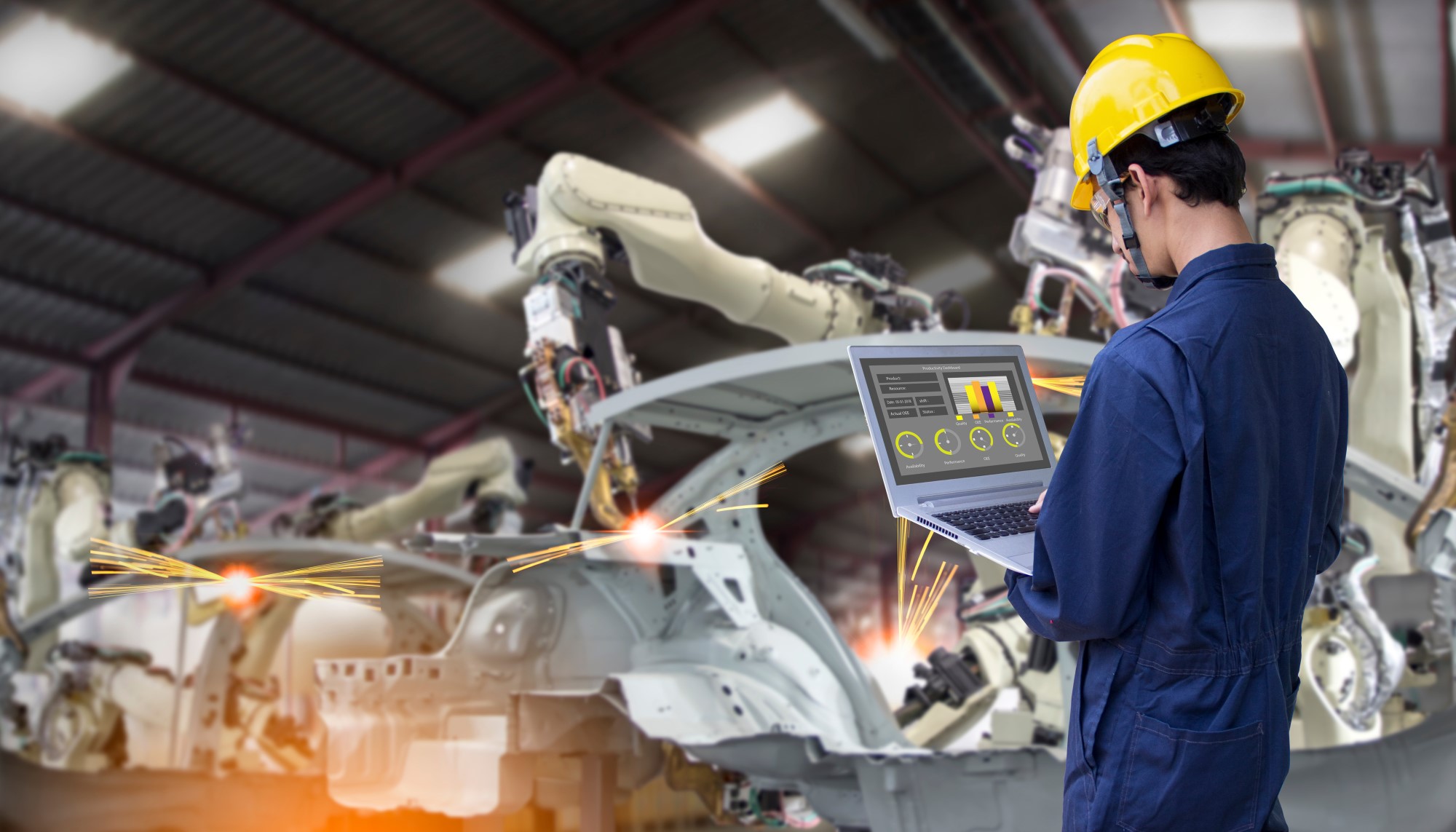
Enhancing The Role Of IT
Inter-connected manufacturing environments have created the requirement for expertise in: programming, networking, security, and advanced skills in networked systems. For example; IT specialist skills take on a reinvigorated essentiality as smart factories connect their physical systems, operational information, & human assets to control manufacturing, maintenance, inventory, & supply chain operations. Rather than the traditional assumption that IT professionals will see most of their time spent within an office, talent recruited into a smart factory paradigm find themselves integrated across many more departments in a company, trading pocket protectors for hard hats. Smart factories are opening up an entire new range of opportunities for job-seeking IT professionals with the required skills and credentials.
Talk The Talk
Smart manufacturing is being discussed everywhere, from the shop floor to the national media. New technologies in smart factories present the opportunity to work more effectively across disciplines and organizations. An effective modern workforce operating with an automated product chain encourages interdisciplinary collaboration by teams of category experts. Ensure that your students have the credentials that will enable them to walk the walk.
How Will You Manage?
Where issues arise in regards to safety and logistics students can use aptitude for management and planning to optimize an automated work setting. Since a smart factory is designed to be more intelligent and flexible, approaches to the management of people and machines have changed. Organization is no longer performed on a per process basis, say’s Cleverism.com; instead, entire production chains are networked with each other.
Troubleshooting From The Hip
Students that display a flair for lateral thinking will relish roles that involve responding to the automated diagnosis of problems with system components diagnosing problems or inefficiencies in a digital supply network. Maintenance of the processes and components used in an industry 4.0 optimized facilities requires keen critical thinking skills and a deft hand for troubleshooting issues. In addition these skills are valuable to system designers looking to ensure the safest and most efficient product delivery.
A Vast Collator Of Data
The Industrial Internet of Things (IIoT) presents a groundbreaking opportunity for data capture at each step of a manufacturing process. Components of a smart factory can track all elements of the production chain and communicate information and even anticipations within the network. The communication between each device allows unprecedented access to data. Students should understand the complexities of an industrial network.

Moving With The Technology
As the machines on the production line become enriched, so to do the skills of the employees. The sophistication inherent in smart factories encourages, and indeed requires, high-skilled employees. By using the right tautological tools, along with corporate partnerships and accredited certification’s; educators can confidently encourage students, as they develop their proficiency, that they are developing vital abilities for the future. This represents a broadening of the field; and speaks to the in-demand skills that employers are eager to welcome into their companies.
With all of these future careers on the horizon, industry-endorsed Industry 4.0 certifications will become even more valuable. That’s why the Smart Automation Certification Alliance (SACA), a non-profit organization, has made it our mission to develop and deploy Smart Certifications for a wide range of industries.
Thanks to the help of our partners, SACA has created certifications that are industry-driven, developed for industry by industry. They are developed through a rigorous process that begins with the creation of truly international skill standards, endorsed by leading experts in Industry 4.0 technologies throughout the world.
SACA’s Smart Automation certifications use a modular structure to enable them to fit a wide range of individual needs, industries, and educational environments, and are available in three categories – Associate, Specialist, and Professional. Each certification is stackable, allowing individuals to start with one certification and add other certifications to customize their documented skills.
All SACA certifications are occupationally focused, so they prepare individuals for specific careers in the world of Industry 4.0. If you would like more information into SACA’s world-class Smart Certifications, please contact us!
- Published in News
New SACA Credentials
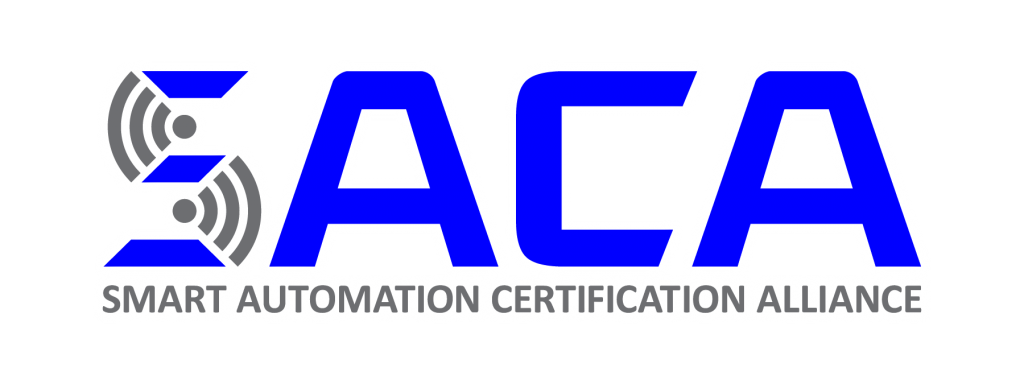
The Smart Automation Certification Alliance (SACA) is offering our members the opportunity to be among the first organizations in the world to pilot six new industry-aligned micro-credentials. These new micro-credentials expand SACA’s robust list of industry-relevant credentials and represent an exciting opportunity for your students or employees to validate their skills for careers in smart manufacturing.
These new micro-credentials are part of SACA’s Specialist Certifications. Each credential assesses competencies for individual technical topics like laser alignment and hydraulic maintenance, or they can be combined with other micro-credentials to form comprehensive occupational credentials such as Automation Systems Specialist, Mechanical Systems Specialist, and Electro-Fluid Power Systems Specialist.
The new SACA micro-credentials are:
- Hydraulic Systems 1 (C-255): To gain this credential, candidates will demonstrate knowledge and skills to: operate industrial hydraulic systems, apply hydraulic system safety procedures; monitor hydraulic system operation; connect and operate basic hydraulic components; check and charge accumulator pressure; monitor performance of hydraulic system pressure and force; and more.
- Hydraulic Maintenance (C-256): To gain this credential, candidates will demonstrate knowledge and skills to: maintain hydraulic systems at peak reliability, install O-rings in hydraulic components; connect and disconnect hydraulic hoses, hydraulic steel tubing, and fittings; maintain hydraulic filters; analyze and service hydraulic reservoir fluid; and more.
- Mechanical Power Systems 2 (C-301): To gain this credential, candidates will demonstrate knowledge and skills to: apply mechanical troubleshooting safety procedures; install and adjust timing belt drive systems, heavy-duty shaft coupling systems, heavy-duty chain drive systems, and heavy-duty V-belt drive systems; troubleshoot mechanical power transmission system; and more.
- Laser Shaft Alignment 1 (C-302): To gain this credential, candidates will demonstrate knowledge and skills to: apply laser shaft alignment safety procedures; perform a rough shaft alignment using a jack bolt system; use a laser shaft alignment system to check/correct for soft foot; analyze the shaft alignment; and more.
- Electrical Motor Troubleshooting 1 (C-303): To gain this credential, candidates will demonstrate knowledge and skills to: apply electric motor safety procedures; connect and test DC and AC motors, single phase and three-phase; measure electric motor performance; troubleshoot and diagnose electric motor faults and component failures in various motors; and more.
- Pneumatic Troubleshooting 1 (C-304): To gain this credential, candidates will demonstrate knowledge and skills to: apply pneumatic troubleshooting safety procedures; troubleshoot air preparation components, pneumatic actuators and valves, and vacuums lift components; troubleshoot pneumatic machine sequence and performance; and more.
These certifications are now on the SACA Portal Site for SACA members only. As a SACA member, your staff and students are eligible to take the assessments for these credentials while they are in pilot phase and there is zero cost to your organization or students!
The results from these pilot tests will be used to set the cut scores. All individuals who have taken the assessments will be notified of their results, either pass or fail. For those who pass, they will receive SACA Silver Certificates and become eligible to be assessed for Gold level.
If you’re interested in piloting these new certifications, please log in to the SACA Portal site. If you’re an administrator or instructor, you will be able to assign these micro-credentials. Once assigned to students and employees, you will need to proctor the test for those individuals. Admins and instructors can proctor their own micro-credential assessments while they are in pilot phase..
To prepare for the assessments or compare your current course content to the content in these assessment, please refer to the SACA standards on the Portal Site.
If you’re not currently a SACA member, but you’re interested in joining the Alliance, you can fill out member order forms here for Education and Industry.
- Published in News
SACA Certifications: Industry’s Missing Link to Solve the Skills Gap
It’s no secret that industries of all kinds are battling a serious supply and demand issue. Due to advancing technology and increasing use of automation, employers need more highly-skilled workers than ever before.
Unfortunately, the supply of workers with the advanced technical and technological skills employers need isn’t keeping pace. This well-known problem is known as the “skills gap.” It’s been a problem for a while now, and experts believe it will only get worse in the near future.
What employers need are workers with advanced “connected systems” skills that will help them operate, maintain, troubleshoot, and repair the automation equipment becoming commonplace in facilities that have adopted new Industry 4.0 technologies.
To date, however, industry and educators alike have been missing the key to solve this skills gap: a set of industry-defined and industry-validated standards that clearly define the skills workers will need to succeed in the jobs of the present and future.
Providing that missing link was the guiding vision behind the creation of the Smart Automation Certification Alliance (SACA). In a recent webinar (“SACA Webinar”) hosted by Matt Kirchner, President of Lab Midwest, representatives of several major manufacturers spoke about their role in the development of SACA’s Industry 4.0 skill standards, as well as how those standards are now guiding their training and education efforts.
SACA’s Vision for Industry 4.0 Certifications
Why are SACA’s Industry 4.0 certifications so valuable? They speak to the in-demand skills that employers across the country — and across the globe — need so desperately.
Not only do the nation’s educational institutions need to build a pipeline of skilled talent to supply employers with the highly-skilled workers they need now and in the future, but incumbent workers also need training to learn the new skills they need to work with the advanced Industry 4.0 automation systems taking over modern manufacturing facilities.
But what are those skills? That’s the key question, and answering that question is what brought SACA into existence. According to SACA’s Executive Director, Jim Wall:
“SACA’s vision from the beginning was to develop a system that’s based upon industry-developed, industry-validated standards that truly define the competencies, performance indicators, and knowledge indicators that are required of individuals to succeed in the world of Industry 4.0.”
To turn that vision into reality, SACA relied upon a wide variety of companies, educational institutions, and organizations to develop, review, and test SACA certification standards. Experts from well-known industry leaders, such as Rockwell Automation, FANUC, Ashley Furniture, Kohler, Foxconn, Boeing, and Hershey, were instrumental in making sure SACA’s Industry 4.0 certifications reflect the competencies that industry needs.
Industry 4.0 is Here to Stay
Several of the industry representatives who shared stories during the SACA Webinar spoke about the changes that Industry 4.0 technologies have wrought and how their companies have been forced to respond.
Al Doty, Advanced Manufacturing Chief Engineer for Harley-Davidson, Inc., revealed that automation has been key to his company maintaining a competitive edge. Not only do new technologies improve efficiency and reduce costs, but Doty noted that employees also expect the company to adopt and use the best technologies available, so that they can perform their jobs more effectively and maintain a positive work-life balance.
Specific new technologies being adopted include advanced robotics and digital twins, according to Scott Theune, President of Plexus. Digital twins are realtime digital counterparts that allow workers to troubleshoot equipment virtually.
In addition to improving efficiency, these new technologies also play a critical role in making manufacturing facilities safer. Improved safety has been a big benefit as industry growth and the skills gap has spurred the need for more automation, noted Andrew Martin, Senior Director of Manufacturing for Generac.
Leaders throughout industry agree: Industry 4.0 is here to stay. According to Michael DeBroux, Senior Mechanical & Automation Engineer and Engineering Supervisor of Greenheck Fan Corporation, “We need to make sure that we are getting personnel and new talent into our company that speaks modern manufacturing languages and is familiar with Industry 4.0 fundamentals.”
OT and IT are Converging in Industry 4.0
According to an i-SCOOP article, “It’s impossible to talk about the evolutions in manufacturing, industrial transformation and Industry 4.0, innovations in areas such as Industrial IoT without mentioning the convergence of IT and OT.”
Historically, operational technology (OT) has referred to “a category of computing and communication systems to manage, monitor and control industrial operations with a focus on the physical devices and processes they use.”
Information technology (IT), on the other hand, “is about business and enterprise systems that store, process and deliver information.” Because Industry 4.0 technologies are becoming more and more commonplace throughout traditional OT equipment, cybersecurity becomes more critical every year.
According to Jim Molter, IT Manager – Smart Factory Deployment of Kohler Co., “Industry 4.0 is forcing us to break down those silos and start to learn to work together…that’s where we’re headed. There’s not going to be a distinction [between OT and IT] anymore.”
Educational Institutions Play a Key Role in Preparing Industry 4.0 Workers
When experts evaluate strategies for bridging the skills gap, it’s clear that educational institutions must play a key role in preparing students for Industry 4.0 careers. But can they do it alone?
The answer is no. Educational institutions must partner with industry counterparts to ensure that the knowledge and skills they’re teaching will produce students with the valuable skills that industries around the country need.
Anne Troka, Community Engagement Manager for Sargento Foods Incorporated, explains a successful approach she helped to develop called Manufacturing 4.0:
“We started conversations with…four schools and four businesses [to] build a partnership to help students — our future workforce — connect with our businesses to really get skills that we need and skills that the students will need…to make them employable in a variety of different careers, because Manufacturing 4.0 is in manufacturing as well as many other industries.”
To date, the partnership has helped to design and build five courses to prepare students for Industry 4.0 careers, including subject areas like mechatronics, industrial controls, robotics, and the Internet of Things. Eventually, students will also be able to earn SACA certifications related to their coursework. In this way, “we’re really connecting education to [career] success,” concludes Troka.
Industry 4.0 Also Requires Upskilling Current Employees
Unfortunately, employers can’t wait for the next generation of highly-skilled workers to emerge from high school or college. As Anthony Ebio, Director of Industry 4.0 Learning for Ashley Furniture Industries, Inc., noted, schools simply aren’t “cranking out the learning and the students fast enough.”
That’s why Ashley Furniture has invested heavily in upskilling its current employees so that they have the advanced skills they need to work with new Industry 4.0 technologies. Ebio noted that they used SACA certifications as a guide when setting up training for incumbent workers: “We found ourselves leveraging a lot of the SACA structure to make sure that we have [curriculum] to support Industry 4.0.”
Other companies are following suit. Ken Evans, Associate Maintenance Manager for S.C. Johnson & Son, Inc., noted that S.C. Johnson has partnered with Gateway Technical College to upskill its employees with an eye toward achieving SACA certifications.
So far both young and older employees have been excited about the prospect of learning and gaining new skills. Plus, using SACA certifications as a guide has allowed current employees to see a payoff for their hard work quickly. According to Evans, “under SACA, [current employees] can get incremental steps of recognition and be proud of it, and we’re proud of them.”
SACA Brings It All Together
If the current skills gap plaguing industries across the world is to be bridged, strategic partnerships between industry and educational institutions must be forged. Schools must begin to produce a pipeline of highly-skilled workers ready to work in an Industry 4.0 environment.
Likewise, industry must upskill its current workforce with the advanced skills needed to operate, maintain, troubleshoot, and repair the Industry 4.0 automation technologies taking over the factory floor.
According to Michael Cook, Director of Global Academic Partnerships for Platinum SACA Sponsor Rockwell Automation, Inc., “no one company can really do this alone…SACA is providing significant leadership here…ensuring that there’s a close fidelity between the academic space as well as what we find relevant in industry. That alignment is a significant part of what SACA brings.”
To learn more about Industry 4.0 certifications and how SACA can help both educational institutions and industry employers begin the task of bridging the Industry 4.0 skills gap, visit the SACA website and then contact SACA for more information.
- Published in News
Can Smart Manufacturing Transform the Food Industry?
What types of products do you buy online? Today, the answer to that question for many people is just about anything and everything. Things haven’t always been that way, though.
In the earliest days of e-commerce, consumers got their feet wet in the online marketplace purchasing products that were known quantities that could be shipped safely and cheaply. More personal items, such as clothing and shoes, retained a foothold in brick-and-mortar stores where customers could try things on to ensure a good fit.
Fast forward to today and it’s easy to see how drastically e-commerce has changed the retail landscape. Some people now purchase all of their goods exclusively online. There are still certain areas, though, where e-commerce has been slow to gain traction. For example, the food industry has yet to replace a trip to the grocery store with an online experience…until recently.
The COVID-19 pandemic changed much about how we live our lives, including that once-simple trip to the grocery store. Now, more and more people are doing their grocery shopping online or via a smartphone app and having their groceries delivered directly to their car at the store.
As a result, the food industry finds itself in need of a transformation to respond to changing realities driven by consumer demand. Experts believe that transformation will come through a variety of new smart manufacturing technologies.
Consumer Demand Driving Changes
When the COVID-19 pandemic began in early 2020, no one fully understood the ways in which our lives would change over the course of the coming months. Routine, everyday tasks, such as shopping for groceries, were suddenly fraught with the potential for exposure to the deadly virus.
Retail grocers were faced with simultaneously managing intense supply chain disruptions that left many shelves bare and customers who wanted as little contact with other shoppers as possible. The solution for many was to pair online shopping (often via an app) with curbside delivery.
Shopping for food online was a new experience for most customers. It didn’t take long, however, for most people to figure out that they could compare prices across various stores just like they would for any other online purchase.
The effect of these changes on the food industry has been significant. As author Katy Askew notes in a recent FoodNavigator article, the food industry is being forced “to rapidly adapt their processes and products to keep up with changing markets” resulting from “elevated consumer expectations.”
Smart Manufacturing to the Rescue
How can food and beverage companies keep up with these rapid changes? Askew spoke with Andrew Smith, Regional Segment Leader – Process & Packaging OEMs at Rockwell Automation, which recently became a Platinum Member of the Smart Automation Certification Alliance (SACA).
According to Smith, “To remain competitive, food and beverage manufacturing systems must optimize productivity and perform at the highest standard. This requires comprehensive and continuous operations improvement.” Increasingly, the food industry is turning to smart manufacturing to achieve those goals.
Smith believes in the potential of smart manufacturing:
“Connected, information-enabled manufacturing – or smart manufacturing – can make all the difference. New technologies are helping food and beverage manufacturers better understand and use their food processing operations. Smart manufacturing can help improve asset utilization, increase yield, drive workforce productivity, optimize resource management, and mitigate security risks.”
Not convinced yet? Smith points to Hillshire Brands as a prime example of what smart manufacturing can do. After the company began using a manufacturing intelligence system at a Texas plant, “the food manufacturer reduced inedible product and waste goals to 0.8% – saving about 5.5 million corn dogs per year.”
Technologies Changing the Game
The impact of smart technologies is not lost on the average person today. Whether it’s the smartphone in your hand or the smart thermostat keeping your home the perfect temperature, nearly every aspect of life has been impacted by advances in technology
Modern manufacturers are no exception, including food and beverage companies. According to Smith, “New developments in technology are redefining food and beverage manufacturing. By combining the Internet of Things, wireless and mobile technologies, data analytics, and network infrastructure, companies can access and act on the data from their operations before a potential problem arises.”
Askew notes in her article that Smith identified five advanced technologies he believes will drive greater adoption of smart manufacturing technologies in the food industry:
Flexible Manufacturing
Flexible manufacturing focuses on how quickly a company can adapt to change. As Matt Graves and Rachel Wilson explain in an article on the Rockwell Automation blog, “It’s about creating a seamless flow from need to delivery. True flexibility empowers manufacturers to stay in tune with their market, by replacing rigid and static operating models with levels of control and responsiveness never previously thought possible.”
When it comes to integrating new technologies, though, the authors stress that companies must not forget about the people using those technologies:
“When it comes to embracing Industry 4.0, integration between departments is key. While new technology can bring data and systems together, getting your people to communicate/collaborate is just as important – and absolutely essential if you want to gain the maximum return on investment.”
Augmented Reality
As Askew notes in her article, “Augmented reality (AR) is a technology that allows users to view and interact with real-world environments through computer generated superimposed images. It enables workers to perform better and avoid safety and compliance risks by providing easy access to the information they need online.”
In smart manufacturing, companies use AR to help technicians troubleshoot problems in real time. For example, maintenance personnel can use an AR app on a smartphone or tablet to zero in on exactly what component of a machine may be malfunctioning and develop a solution more quickly, thereby reducing equipment downtime.
Predictive Maintenance
The heart of smart manufacturing is the collection, processing, analysis, and application of the tremendous amounts of data (sometimes called “big data”) generated by the production process. According to Askew, companies will use “powerful machine learning algorithms and predictive analytics software to offer predictive and prescriptive maintenance.”
Practically, this means that machines equipped with smart sensors can monitor their own performance. Technicians will receive alerts from machines when maintenance needs are imminent, allowing them to maintain and repair equipment before breakdowns occur, thereby reducing downtime and increasing productivity.
Edge Computing
A Rockwell Automation article explains edge computing in this way:
“Edge computing combines a machine’s control and computing hardware into one platform, either with a controller that has a built-in computer or with a computing module that sits on the same rack as the controller. With this two-in-one approach, you can put all your machine’s digital content — such as custom code, the controller’s human-machine interface (HMI) application and any third-party software programs — right where the controller resides, rather than in another location. This creates inherent benefits for end users, including space savings and access to data right at its source. But it also creates new opportunities for you to build entirely new solutions for production applications.”
According to Askew, “Edge computing will complement existing cloud infrastructure by enabling real-time data processing where work is done (for example, motors, pumps, generators, or other sensors). Implementing integrated analytics from the edge to the cloud will help these companies maximize the value of investments in digital systems.”
Digital Twin/Digital Thread
In addition to augmented reality apps, companies are also using advanced digital tools to assist with troubleshooting, such as digital twins and the Digital Thread. According to Askew, a digital twin is “the collection of data created in software representing a real-life system. Machines, controllers, processes, workflow, and any other aspect of a system can be represented digitally, without any interruption to ongoing activities.”
Similar to a digital twin, the Digital Thread “creates a virtual representation of how data travels within a company. The Digital Thread enables supervisory enhancements throughout the supply chain, including delivery of work instructions to operators, quality control sampling, and automated activation of components and materials from vendors, suppliers, and partners”
What can these technologies do for the food industry? Askew paints an interesting view of a future that’s probably a lot closer than we think:
“In the near future, we will see that by interconnecting business systems through the Digital Thread, companies will practically start up new production lines. Using the digital twins, manufacturers will run machines virtually before parts are ordered, discover control issues before support personnel review them, predict future performance challenges and opportunities, simulate line changes to stay keep up with changing customer demands, and will train new staff in non-stop systems of activity.”
SACA Certifications Validate Industry 4.0 Skills
Employees in the food and beverage industry would do well to complement their current skillset with advanced Industry 4.0 skills that will help them change and grow with advances in technology. For those workers wanting to specialize in Industry 4.0 technologies, the certifications offered by the Smart Automation Certification Alliance are a great place to start. SACA offers industry-standard certifications that focus on “connected systems” skills. To learn more about the different types of SACA certifications, visit SACA online.
- Published in News
Rockwell Automation Joins SACA as a Platinum Member, Director Praises SACA’s Efforts
Michael Cook, Rockwell Automation’s Director Global Academic Partnerships, recently endorsed the Smart Automation Certification Alliance’s efforts to create standards to ensure industry that potential employees possess up-to-date Industry 4.0 skillsets.
Rockwell Automation has also joined SACA as a Platinum Member, which allows them to offer SACA certifications to their employees and provide scholarships to sponsor educational institutions and teachers when they start new certification programs in Industry 4.0. This commitment will impact the standards and future direction of the certifications, and promote the leadership in Industry 4.0 education.
“Technology disruption is widening the gap between student learning and industry relevance of learning. At the same time, it is also shortening the shelf life of degrees and opening up variable pathways of learning. To narrow this gap we are actively participating with the Smart Automation Certification Alliance and other industry stakeholders working alongside education to create relevant standards around Industry 4.0 and more importantly access to relevant stackable learning.”
Michael Cook
Director Global Academic Partnerships
Rockwell Automation
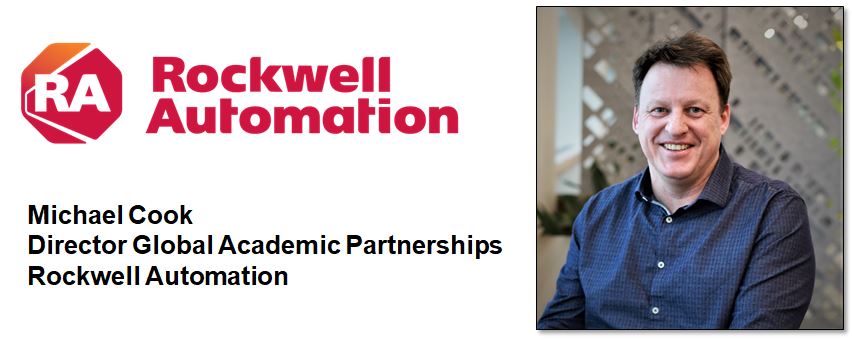
- Published in News
